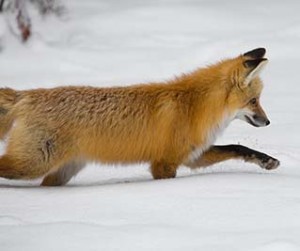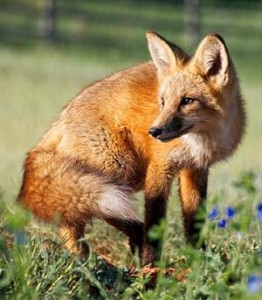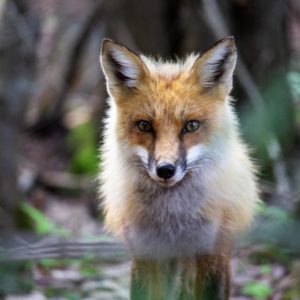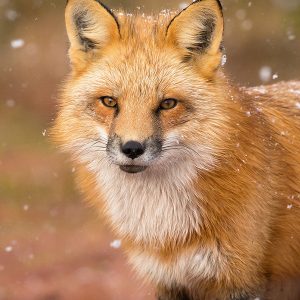The Red Fox: Quick, quiet and resourceful
How is it that the Red Fox became so widespread? They live in diverse habitats around the world including forests, grasslands, mountains, and deserts. They also adapt well to human environments. In Canada, their range extends across the country and north into the tundra. Over the course of years, I have spotted Red Foxes in Ottawa’s green spaces while travelling on a bus.
Here are some behaviours that explain their successful adaptation to a wide geographic area.
Quick
The quick Red Fox: The long fur makes the Red Fox look larger than it is; it is actually diminutive and lithe. The body weight ranges from 3-14 kg and the body length is 100-112 cm including the tail that can be 1/3 of its total length. Their hind legs, which are relatively longer than other canids, increase propulsive force making for a more effective predator. They are able to run at speeds up to 48 km/hr and jump fences two meters high. When forced to, they are good swimmers. Not only is the Red Fox a fast runner it also has
stamina. This fitness is an advantage in chasing down a mouse or a rabbit but also important when hunted by predators such as bobcats, wolves and coyotes.
Quiet
The wily fox: Foxes are sit-and-wait predators; they will sit quietly and patiently until their prey is within reach, and pounce, or quickly dig to locate prey. Their senses of smell, vision and hearing are all strong. Red Foxes can locate sounds to within one degree at 700-3,000 Hz, and slightly less at higher frequencies. This sense enables initial detection to begin prior to visual detection. A Red Fox’s eyes have retinas dominated by rods, which function better in low light. These senses are advantageous to a stealth nighttime hunter.
Resourceful
 The diet is variable: Red Fox feed on rodents, rabbits, birds, and other small game but their diet, which varies with the season, can be as flexible as their home habitat. Unlike other wild canids, the Red Fox is an omnivore. They will eat fruit—remember Aesop’s Tale of “The Fox and the Grapes”—seeds and vegetables, bird’s eggs and chicks, fish, frogs, and even insects and worms. If living among humans, foxes will opportunistically dine on garbage and pet food.
The diet is variable: Red Fox feed on rodents, rabbits, birds, and other small game but their diet, which varies with the season, can be as flexible as their home habitat. Unlike other wild canids, the Red Fox is an omnivore. They will eat fruit—remember Aesop’s Tale of “The Fox and the Grapes”—seeds and vegetables, bird’s eggs and chicks, fish, frogs, and even insects and worms. If living among humans, foxes will opportunistically dine on garbage and pet food.
They store food: When they are full, Red Foxes stash away excess food for later use. They bury the food in the ground or snow or hide it under foliage or grass. They urinate over the cache to mark it as their own.
The have a large territory over different habitat types: The Red Fox has a 3-8 km2 range. They live in the open denning only to rear kits or in stormy weather. The den is usually a hollow log, dense bush or an abandoned rabbit or groundhog den.
Otherwise solitary the dogs and vixens pair to mate and rear their young (December-September). Once the kits have the hunting skills to feed themselves, they leave the care of the parents. The first winter the young foxes stay in heavy bush, if they can survive their first winter, they move from their parental territory—studies show that dogs set up their territory ~250 km from their birth den. Once in their own territories, the life cycle continues for these Red Foxes.





